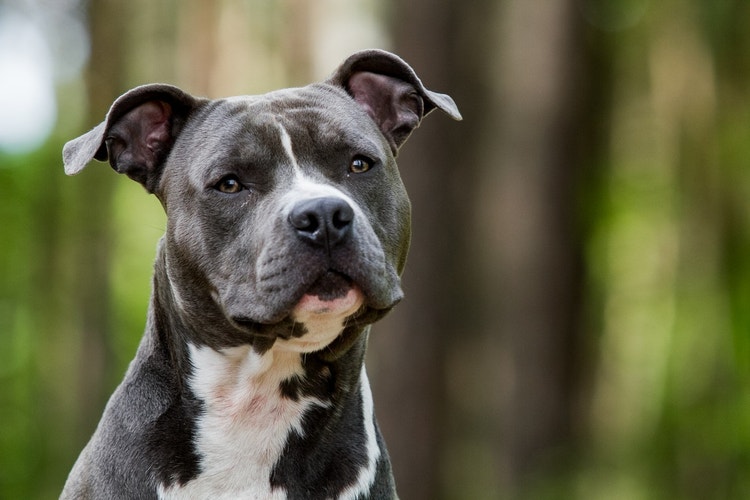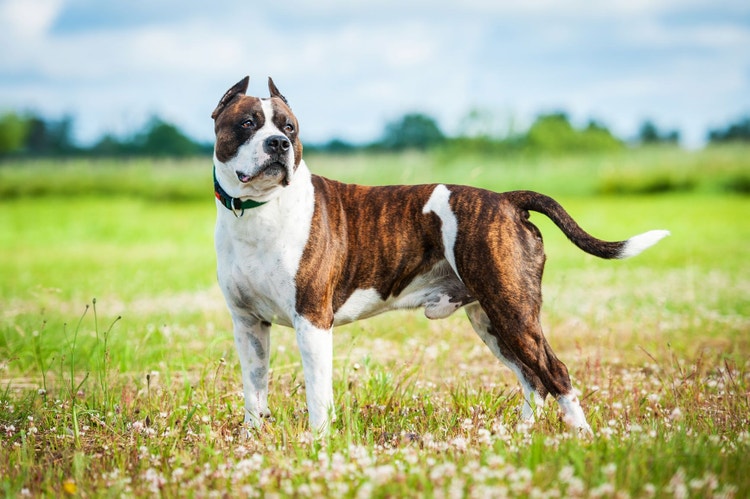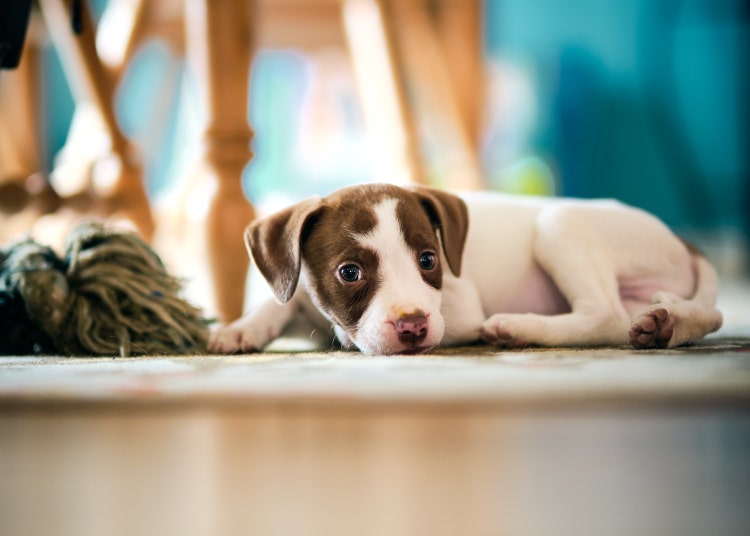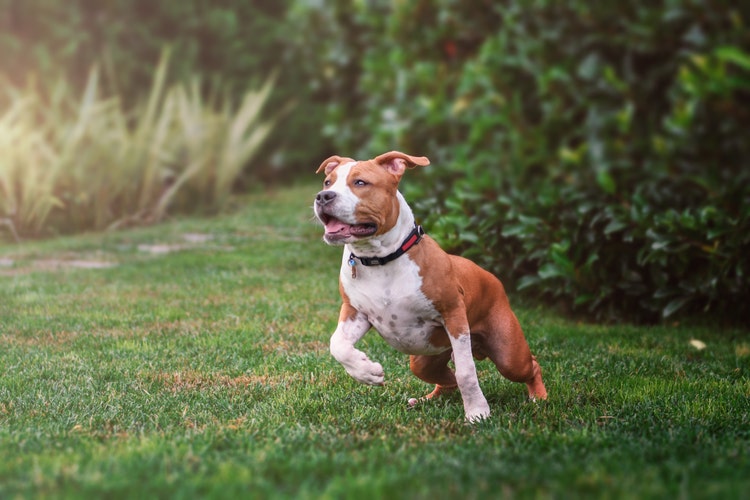
American Staffordshire Terrier


Where Do American Staffordshire Terriers Come From?
The American Staffordshire Terrier’s origin is an unfortunate one. In the late 1800’s, Americans imported English dogs to compete in the sport of dog fighting. The AmStaff is a cross between the bulldog and terrier, which created a powerful, agile, and courageous brawler.
After dog fighting became illegal in the early 20th century, breeders reduced the aggressive tendencies so prized by their earlier owners, leaving the loyal and protective AmStaff we know and love today. The Staffordshire Terrier was accepted by the AKC in 1936, but the name was changed to the American Staffordshire Terrier in 1972 to differentiate from the English Staffordshire Bull Terrier, which is smaller and lighter than its American counterpart.
Caring for an American Staffordshire Terrier
What Kind of Diet Does an American Staffordshire Terrier Need?
What Kind of Diet Does an American Staffordshire Terrier Need?
American Staffordshire Terriers require a nutritious diet. They tend towards obesity, so monitoring calorie intake is a must.
How Much Grooming Does an American Staffordshire Terrier Need?
How Much Grooming Does an American Staffordshire Terrier Need?
Grooming requirements are limited. Brushing weekly to remove loose fur and to distribute skin oils will keep the coat healthy and shiny. Bathing every few weeks should be sufficient.
Are American Staffordshire Terriers Healthy Dogs?
Are American Staffordshire Terriers Healthy Dogs?
AmStaffs are generally healthy, with an average lifespan of 14 – 16 years. They should be evaluated for hip dysplasia, heart disease, and skin allergies.
Staffordshire Terriers are predisposed to: gastric dilatation volvulus, hip dysplasia, parvovirus, cataracts, and arthritis. Less common illnesses for the breed include lick granuloma, cutaneous histiocytoma, entropion, patent ductus arteriosis (PDA), mast cell tumor, and progressive retinal atrophy (PRA).
Do American Staffordshire Terriers Need to Be Trained?
Do American Staffordshire Terriers Need to Be Trained?
Training and socializing AmStaffs is necessary, but quite easy, thanks to their strong desire to please. They may not be the right breed if you are a novice dog owner, as they can be aggressive even with adequate training.
How Much Exercise Does an American Staffordshire Terrier Need?
How Much Exercise Does an American Staffordshire Terrier Need?
AmStaffs must be exercised daily or they may be prone to chewing or digging. They are highly energetic and athletic, excelling at agility, obedience, dock diving, and even search and rescue. They also love to spend time with their families, especially during activities like a long walk or jog. Having your AmStaff on a leash in public is imperative, since they have a strong prey drive and can be wary of strangers.

Are You Ready to Adopt an American Staffordshire Terrier?
To adopt an AmStaff, start by making sure a dog of this size and demeanor will fit your lifestyle and the guidelines of your city and neighborhood. Use our pet adoption checklist to walk through each step in the adoption process. Complete the necessary adoption applications and be prepared for interviews or home visits. Spend time with potential dogs to find a good match. Finally, prepare your home for the new pet, ensuring it's safe and welcoming.

Pet Insurance Options for American Staffordshire Terriers
Pet insurance for an AmStaff may help cover costs for conditions like hip dysplasia, arthritis, and bloat. Consider a policy that includes hereditary and congenital conditions, flexible coverage options, and reasonable premiums.
Use our insurance aggregator tool to compare providers and find the best plan for your dog's unique needs.
What Are the Physical Characteristics of an American Staffordshire Terrier?
American Staffordshire Terrier Facts
Other Breeds to Explore
References
- American Kennel Club. The Complete Dog Book. Random House Digital, Inc., 2006.
- Morris, Desmond. Dogs: The Ultimate Dictionary of Over 1,000 Dog Breeds. Trafalgar Square, 2002.
- Wilcox, Bonnie and Chris Walkowicz. The Atlas of Dog Breeds of the World. T.F.H Publications, Inc., 1995.


